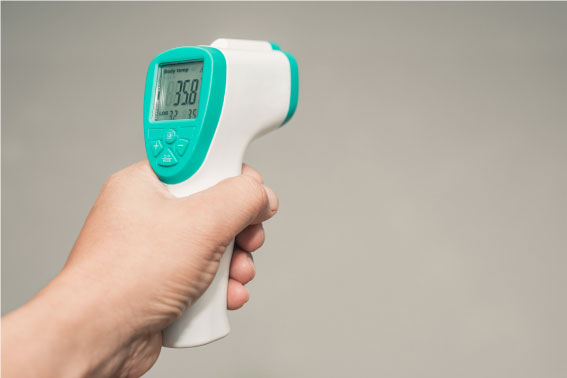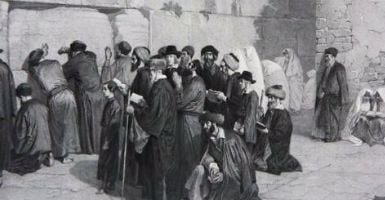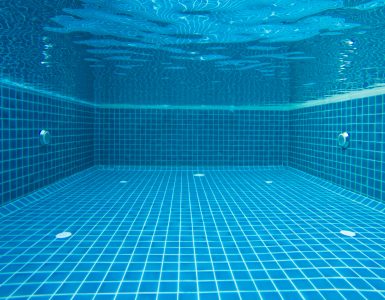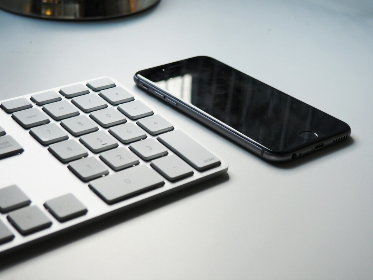Acharei Mot – Kedoshim 5780
And you shall not place a stumbling block before the blind. (Vayikra 19:14)
This Pasuk defines the prohibition of Lifnei Iveir – causing another Jew to stumble in any manner. This Issur includes placing a literal stumbling block in somebody’s path, offering nefarious advice, or causing someone else to commit a sin.
Lifnei Iveir is a wide-ranging Halacha with many practical applications. In the following paragraphs we will examine a novel perspective on the topic through a discussion of a Halachic question that has arisen in recent weeks.
With the outbreak of COVID-19, health authorities in many countries around the world have implemented stringent measures in order to reduce the spread of infection. One of the common measures is to measure the temperature of anybody entering certain public buildings (e.g. hospitals). This is often performed using a thermometer which detects thermal radiation such that no contact is made between the device and the person.
Taking a person’s temperature on Shabbos for the purposes of Refua is generally permitted. Though taking measurements on Shabbos is an Issur d’Rabbanan, it is permitted for a Mitzva such as Refua (Shulchan Aruch O.C. 306:7 & Mishna Berura ibid. 36). However, the use of battery-powered digital thermometers may well involve the Melachos of “Boneh” and “Makeh bPatish”, and causing the numbers to appear on the screen of the device may violate the prohibition of “Koseiv”. Therefore, digital thermometers should only be used in cases of Pikuach Nefesh and where a mercury thermometer is unavailable[1].
This leads to our question. May a person go to a hospital on Shabbos to visit a sick relative[2] when he knows that his temperature will be taken at the entrance? Hospital employees are posted at all hospital entrances to ensure that nobody enters without their temperature being measured, regardless of their state of health. Is it a violation of Lifnei Iveir to visit the hospital?
There are two important points with which we should begin:
The employee does not commit an Issur by measuring peoples’ temperature. In fact, he fulfills a Mitzva as this policy is an essential measure in preventing the spread of the virus which is a matter of Pikuach Nefesh. Moreover, the hospitalized patients are more vulnerable to the virus and at higher risk of complications and mortality than the general population, so protecting them is imperative.[3]
Furthermore, a visitor to the hospital plays no active role in the Melacha that is performed when his temperature is measured. He merely stands passively while the employee activates the thermometer. Therefore, our only question is whether there is an element of Lifnei Iveir in arriving at the hospital and thereby compelling the hospital employee to take the visitor’s temperature.
`The crux of this question is whether there is actually any element of “Michshol” (stumbling block) in this case. Given that the guard is performing a Mitzva by taking the temperature of visitors, and that the visitor is not performing a Melacha (as stated), where is the prohibition that would invoke the concern of Lifnei Iveir? On the other hand, perhaps it could be argued that since the visitor does not need to visit the hospital at all and his visit compels the hospital employee to perform a Melacha that could have been avoided, he has transgressed Lifnei Iveir by presenting himself at the hospital.
The Poskim discuss a similar question which can be dubbed Hachshalas Chavero b’Ones – “Causing One’s Friend to ‘Stumble’ in a Case of Coercion”. We will examine this question and discuss whether it is comparable to our case.
If Reuven says to Shimon, “Eat this forbidden food or I will kill you!” then Shimon must eat the food as Pikuach Nefesh overrides all of the Issurim in the Torah. Shimon has committed no sin by eating, but has Reuven violated Lifnei Iveir by forcing Shimon to eat?
The Chelkas Yoav (1) contends that Reuven has not transgressed as he has not caused Shimon to sin. However, the majority of the Acharonim disagree. Among them was Rav Moshe Feinstein zt”l (Y.D. 1:3) who explained that even though Shimon has not sinned, “nevertheless an Issur was performed through him (Reuven) and he was not coerced (to act as he did).”
Why was “an Issur performed” despite Shimon being permitted to act as he did? Rav Moshe distinguishes between placing a physical stumbling block in front of a person or offering nefarious advice which is a “Bein Adam laChaveiro” matter (between one man and another), and causing him to sin, which is a “Bein Adam laMakom” matter (between man and Hashem). The latter type of Lifnei Iveir is not a prohibition to cause damage or harm to another Jew, but to ensure that he doesn’t cause a “Michshol of a sin” to occur, even if the act was completely permissible due to the coercion.
Rav Moshe adduces an amazing proof for this distinction from the Halachos of Ribis. There are two sorts of Ribis – Ribis Ketzutza (Ribis that has been “fixed” – i.e. agreed upon from the start) which is an Issur d’Oraisa, and Ribis she’Eino Ketzutza (Ribis that was not agreed upon from the start) which is only an Issur d’Rabbanan[4]. By initiating a loan with Ribis, the lender has presumably transgressed Lifnei Iveir by causing the borrower to take a forbidden loan. Why then is he not in violation of an Issur d’Oraisa (namely Lifnei Iveir) even when he charges Ribis she’Eino Ketzutza? Is causing his friend to transgress an Issur d’Rabbanan any less of a stumbling block than a literal stone placed in his path that causes him to trip? If Lifnei Iveir would only be a Bein Adam laChaveiro matter, there should be no difference between causing another person to stumble in an Issur d’Oraisa or an Issur d’Rabbanan.
We must conclude, argued Rav Moshe, that causing another to sin is purely a Bein Adam laMakom matter in that one is responsible for ensuring that no act of sin occurs in the world. Therefore, by causing someone else to violate an Issur d’Rabbanan, one cannot be in contravention of Lifnei Iveir as Min haTorah this is not a “sin” and therefore does not constitute a Michshol.
Therefore, Rav Moshe asserted that even if a person commits no sin with his act (such as if it was an Ones), the person who caused him to do it did transgress Lifnei Iveir as he caused “an act of sin to take place in the world”.
HaGaon Rav Asher Weiss Shlit”a (Shu”t Minchas Asher 2:31) agrees with Rav Moshe’s conclusion that it would be a transgression of Lifnei Iveir but contends that there is no need to characterize this type of Lifnei Iveir as Bein Adam laMakom. It could simply be said that it is Hashem’s will that no act of sin should be performed, even b’Ones. Irrespective of the person’s culpability for the act, any act of sin is a cause of Hashem’s “Charon Af” and “Hester Panim”, and he who instigates it certainly has “stumbled” and one who coerces him to commit a sin therefore transgresses Lifnei Iveir.
Let us return to our question and examine whether it is indeed a case of “Hachshalas Chavero b’Ones”.
In a situation of Ones, though a person is permitted to perform an act that would seem to be sin, the act itself remains a “forbidden act” yet the situation calls for leniency. Therefore, it isn’t difficult to understand that the person who caused it to take place is considered to have “added a sin to the world” (in Rav Moshe’s words) or “contradicted the will of Hashem in the world” (in Rav Asher Weiss’ definition) and therefore transgresses Lifnei Iveir.
However, our case is markedly different. The hospital employee is not in a situation of Ones, but is performing the Mitzva of Hatzalas Nefashos. Therefore, the act of taking a visitor’s temperature is not an act of sin performed b’Ones but an entirely permissible act. Perhaps there would be no transgression of Lifnei Iveir in those circumstances.
Furthermore, there’s a seemingly obvious distinction between the two cases. In the case of the Poskim, Reuven deliberately and actively caused Shimon to sin. In our case, the visitor has no interest or desire in having his temperature taken (and would prefer that it would not), even though he knows that someone will have to take his temperature when he arrives at the hospital. Perhaps the Poskim would agree that our case would not be considered “Hachshalas Chavero b’Ones”.
Nevertheless, it seems logical to say that there would be a violation of Lifnei Iveir in our case, as the visitor made a deliberate choice to visit the hospital in the first place. Though the guard’s act of taking his temperature was a Mitzva, since the Melacha that he performed in doing so was essentially unnecessary as the visitor could have chosen not to come to the hospital, it cannot be said to be purely Hatzalas Nefashos. In light of Rav Asher’s formulation, we may say that it is certain that Hashem’s will is that this visit which will necessitate Chilul Shabbos not occur, even though the act of taking the visitor’s temperature will be a Mitzva if it does.
However, if the employee is a non-Jew it would certainly be permitted to visit the hospital on Shabbos for the purpose of Bikur Cholim or another Mitzva. Doing so would not be considered “Amira l’Nachri” (instructing a non-Jew to perform a forbidden Melacha on Shabbos which is itself an Issur d’Rabbanan) as the visitor does not instruct or even hint to the guard to perform a Melacha.
Though some argue that in this case a visit to the hospital would violate Lifnei Iveir as this would be a Michshol in front of the hospital administration who appointed the non-Jew who must now perform a Melacha on their behalf, this is an unreasonable claim. As stated earlier, the hospital cannot prevent visitors only on Shabbos and must therefore appoint someone to take the temperatures of everyone entering the hospital for the safety of all parties. Therefore, neither the hospital administration nor the visitor commits a sin when a visitor’s temperature is taken.
[1] We should note that several of these assumptions are a matter of dispute:
- According to some Poskim, battery-powered devices are certainly not a violation of an Issur d’Oraisa.
- Some contend that the numbers that appear on a screen are not “Omed l’Hiskayem” – they are impermanent and therefore not an Issur d’Oraisa.
- Violating a Melacha may depend upon the type of bulb that the thermometer contains (such as whether it is an LED bulb or other type).
[2] [Editor’s note: This is obviously only in the scenario that the hospital is permitting visitors during the pandemic; many, if not most, hospitals in the United States have forbidden all visitors at this time outside of a few limited exceptions.]
[3] It should be noted that if hospitals would be governed solely by Halacha, they would remain closed to visitors on Shabbos at this time and entry would be permitted only to medical personnel and essential hospital employees, those who need emergency care, or others whose reason for access is a matter of Pikuach Nefesh. This would reduce the need for measuring the temperature of others unnecessarily. However, in those hospitals that still allow visitors and cannot restrict visitors only on Shabbos, there is no alternative but to take the temperature of all of those who arrive, and doing so is therefore a Mitzva.
[4] A detailed description of these two types of Ribis is beyond the scope of this essay and immaterial to understanding Rav Moshe’s rationale.















Add comment